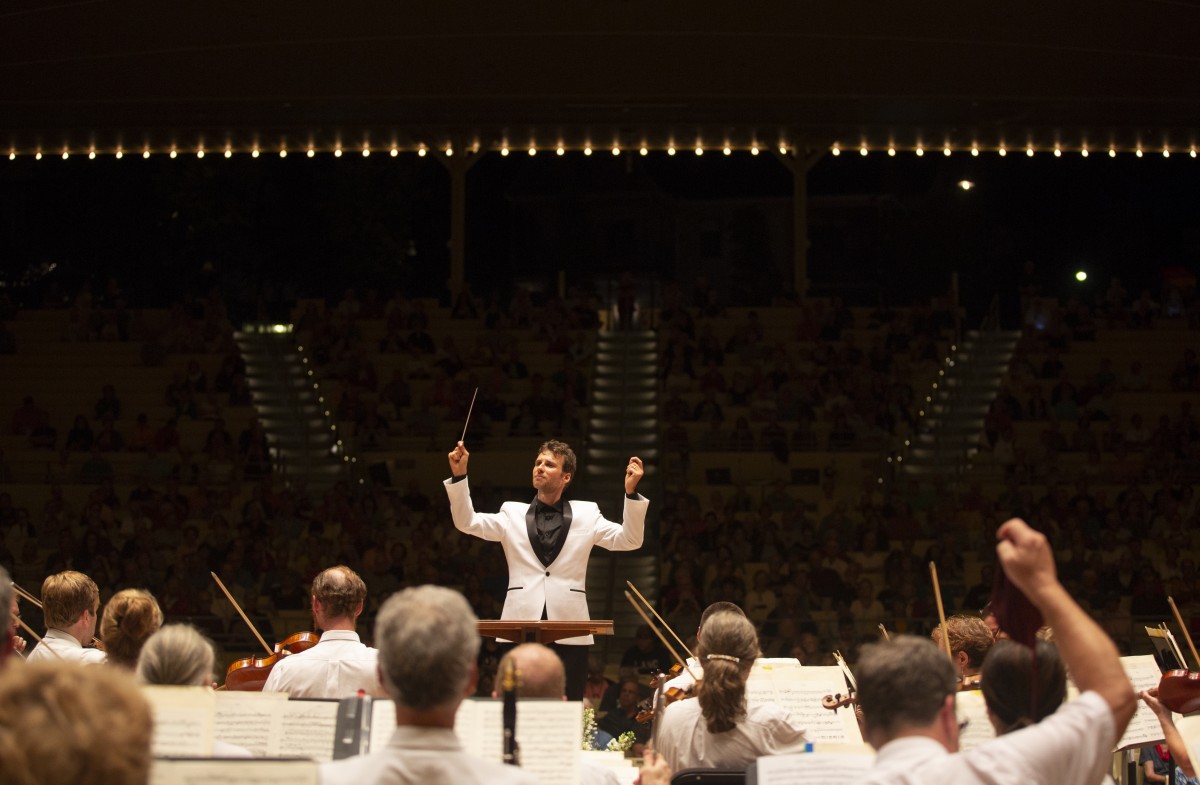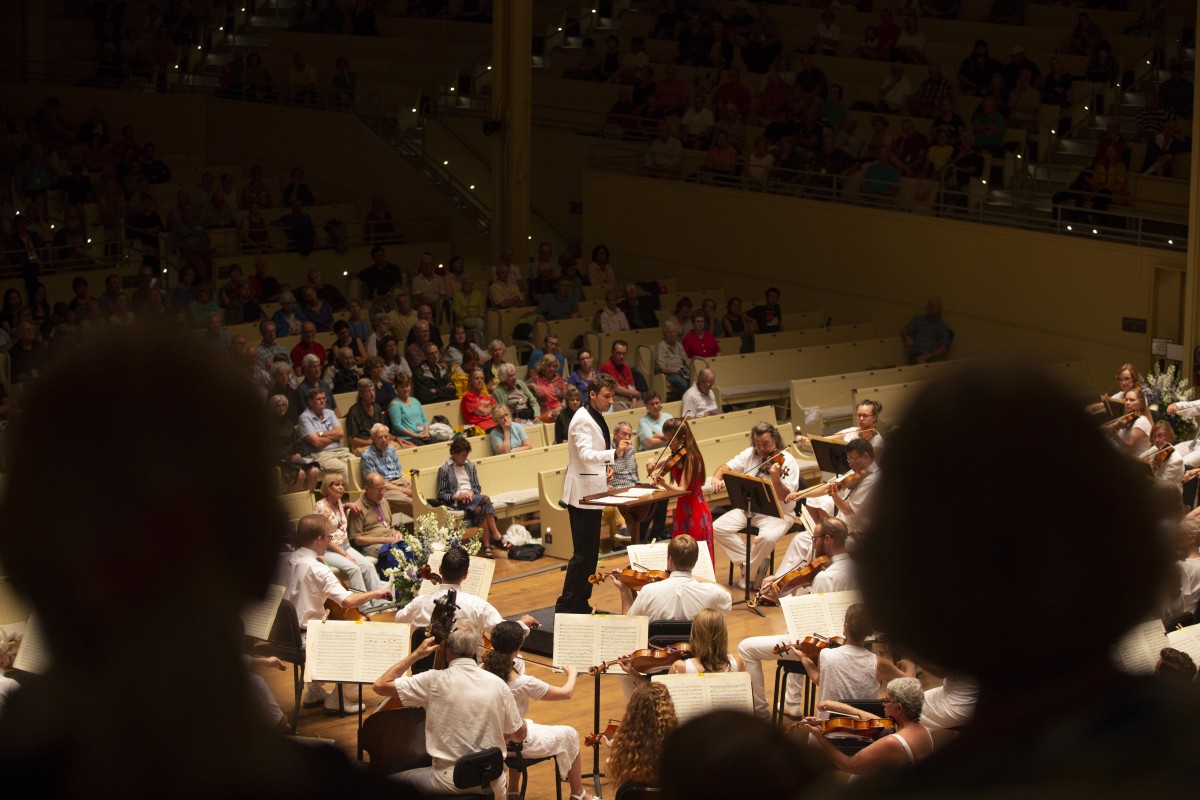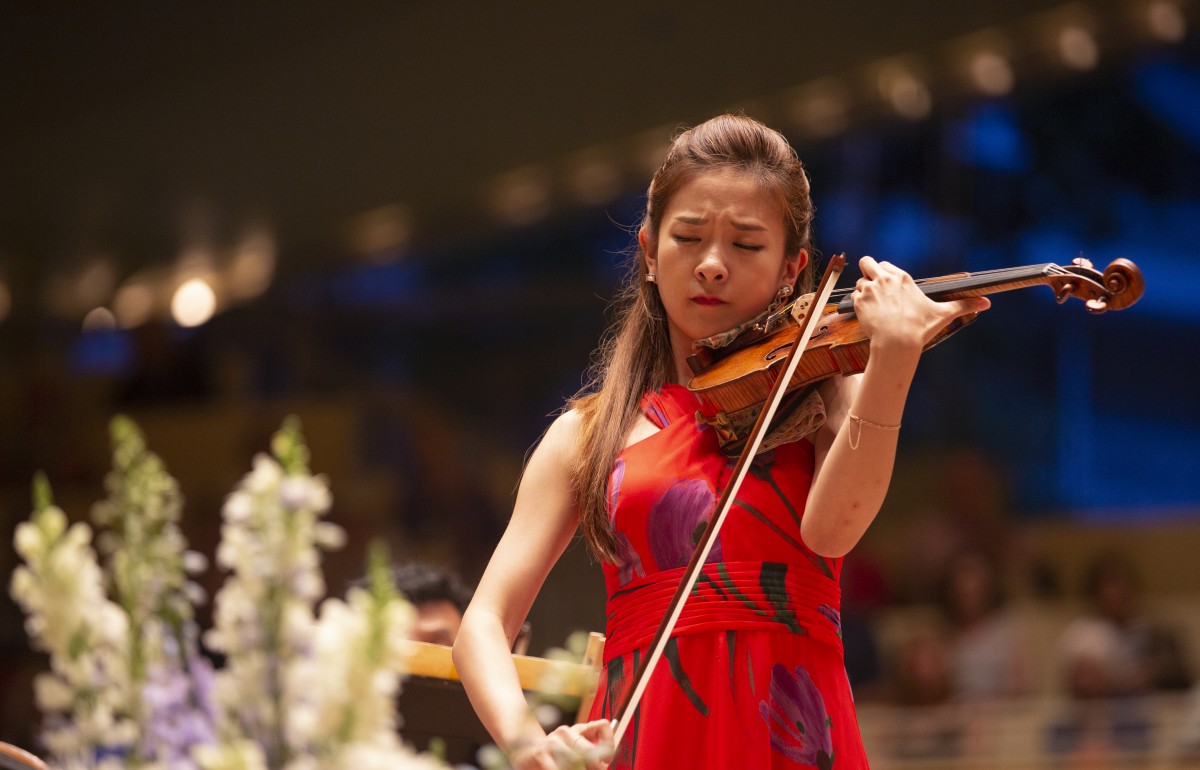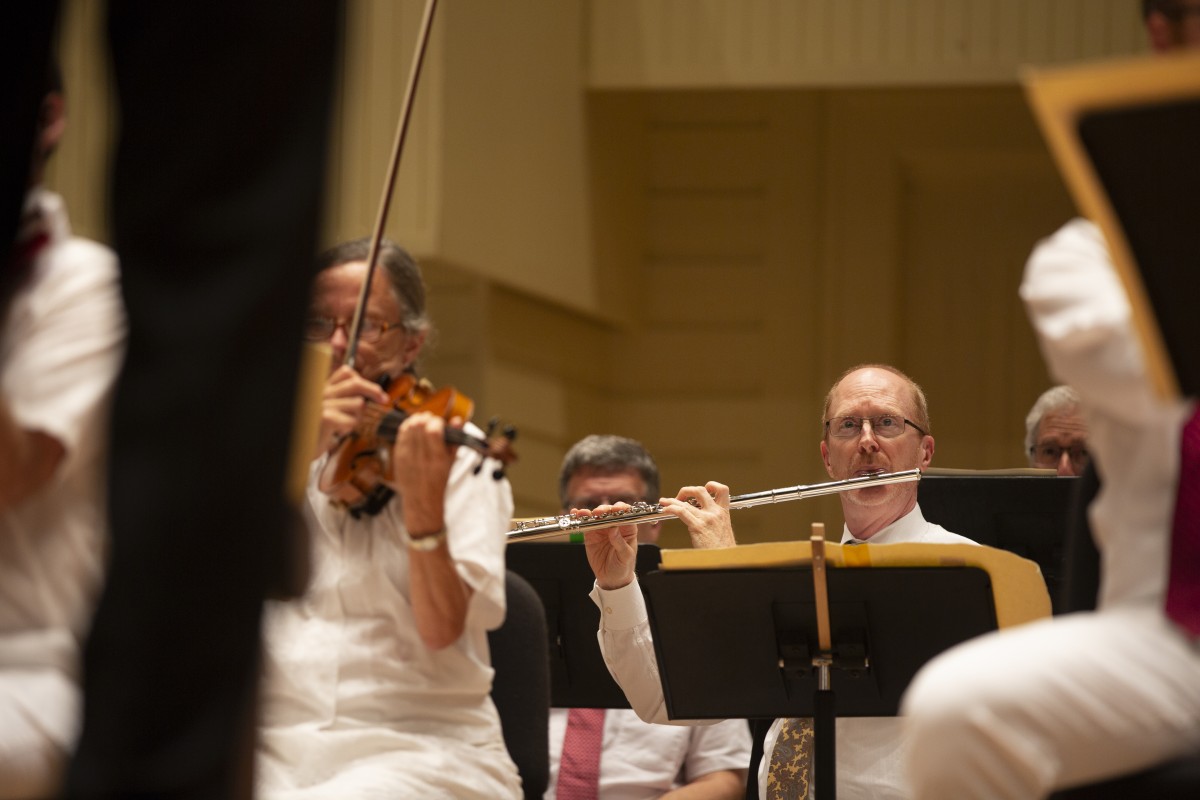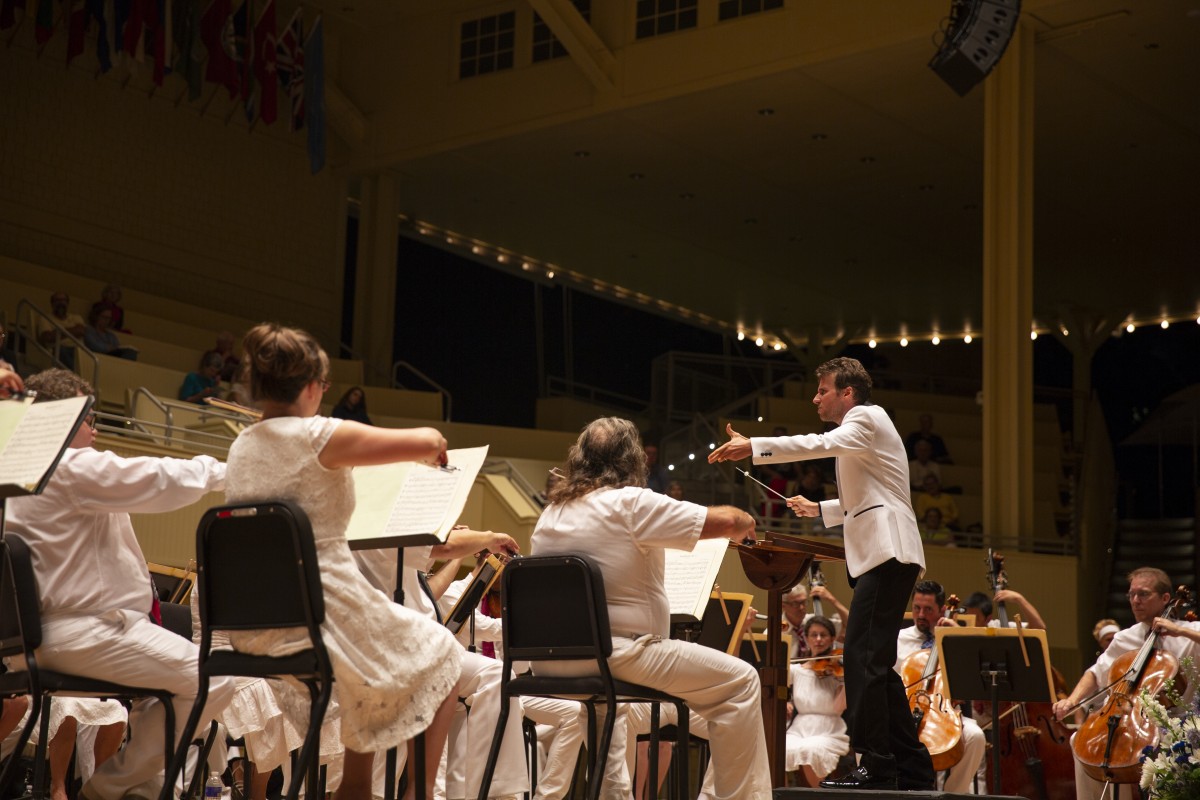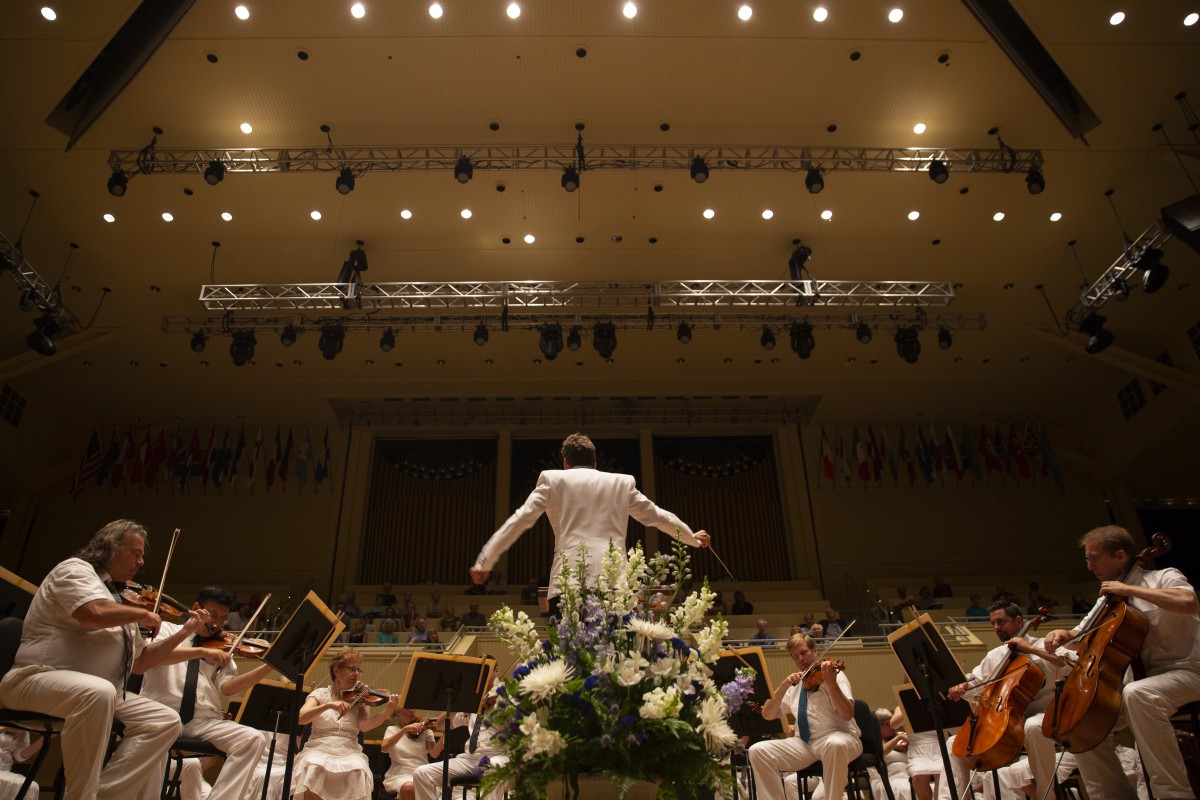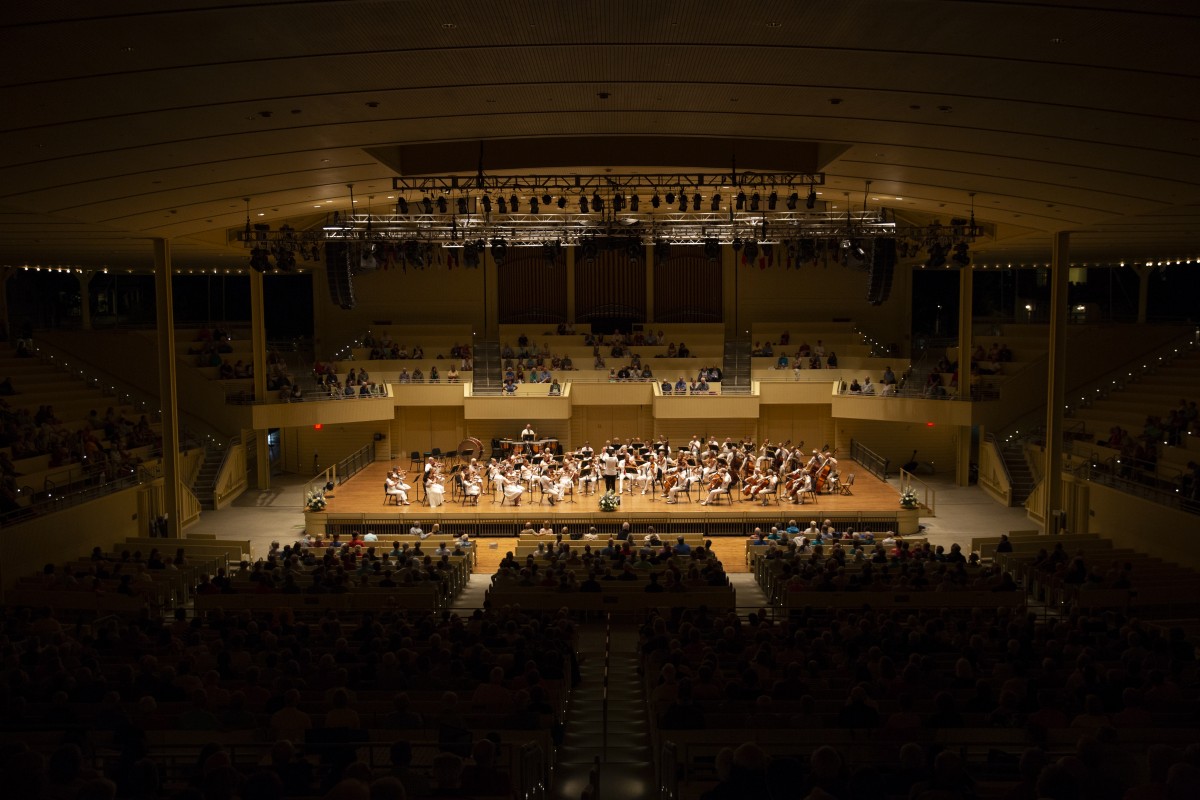The night was in her hands. She revealed how to create tenderness, free from any damage.
YooJin Jang wore a fuschia evening gown with emerging flowers, and her violin made soft ripples in still water. She brought sound to life. Her sound was like a falling leaf. It was a rainy night at Chautauqua.
But YooJin Jang held the threatening thunder at bay. With her instrument, she carried both supple grace in long, lyric passages and then, moving more rapidly, with the exquisite strength of a hummingbird. Yes, breathtaking. She was fulcrum.
This was the cadenza in the long first movement of Ludwig van Beethoven’s Violin Concerto in D major, opus 61, the second in the series called the Beethoven Festival in the Amphitheater, and the second of three works on Tuesday, July 24.
Then, she and the orchestra moved in the second movement along a precious path at the edge of silence, a tender way marked by Beethoven’s surprises in melody as in more formal dynamics, a remarkable exchange between artist and support.
This rainy night in Chautauqua was also a night for youth. Ms. YooJin is a Ph.D candidate at New England Conservatory of Music, and the evening’s conductor, Stilian Kirov, a matriculating student at Chautauqua’s School of Music in 2010, enjoyed his debut tour just last year. In their care was iconic work by a preeminent artist, and they led this evening the talents of the Chautauqua Symphony Orchestra, their elders.
If there is a Book of Musical Beginnings, Tuesday’s concert on July 24 manifest three chapters. The opening brief was Giuseppe Verdi’s overture to La forza del destino, starting up with three bass assertions from the orchestra, long blasts like an arriving steamboat; and likewise, the concerto, beginning with five beats from the timpani, repeated thereafter, a last note held for just a key moment of authoritative emphasis.
Then, of course, the four beats of Beethoven’s Symphony No. 5 in C minor, opus 67, the famous ta-ta-ta-dah, the Morse code for “V,” sign of victory. Kirkov held the last note for an extra breath of gravitas. (The Fifth also has a leadership place in The Book of Endings, with one of the most sustained and sur- prising of all in the canon).
Back to the concerto for a moment, held in parallel with the Fifth. If its soloist is the measure of youth today, all is right with the world after all. Even the thunder moved aside to listen, and what a play there was to silence the heavens, that five-note timpani theme — at one time plucked by the strings, like wisps of a dream carried by glimpses throughout of that timpani motif. Through the shorter second and third movements, the soloist and orchestra then create a sudden caprice, tossed between them. It is clear, concise, and thus given to wonder, very well-managed.
The audience rose quickly with huzzahs and sustained applause.
The floor of the Amphitheater, after all, was pleasantly filled, despite the menace of such threatening weather, and through the wait for the Fifth, most everyone stayed and were grateful.
Brought back was the time between 1804 and 1808, which was strained in Europe, even though this was the time of the creation of the Fifth — along with the invention of the artist’s only Concerto for Violin. But for most, it was dangerous and unnerving. Beethoven’s deafness was coming on, and the realization must have shaken him. Napoleon was rampaging across Europe and occupying Vienna, yet from Beethoven came jubilance, hope and joy in the face of chaos. Beethoven was creating Big Ideas, the Fifth so big as to be sent as humankind’s emblem aboard the Voyager nearly two centuries later into outer space.
The Fifth Symphony well may be the most famous of sonic events — akin to thunder — sometimes slow and stately, other times majestic and grand, frolicking and playful. Does it represent an inner fate or doom, as some say? I think not. It is, instead, about as close as we can come to a theory of everything, summoned, as did Albert Einstein in the next century, by the briefest of equations. It is a feat beyond common expectation, and Beethoven wove his summa of four notes throughout the first movement of his symphony, magically over and over again, each time afresh.
In our time, the young Maestro Kirov shapes and sharpens these moments throughout, and he nails the ace moments to the wall of sound, presented for delectation. This is a symphony that is built both forward and back, from the start going forward and from the climax looking back, molding into finer meaning the near past. Looking back and forth, this Fifth sees its finale through the focused lens of those four first notes and sharpens the discourse each step along the way. And at the end, Beethoven strings out his extended tease of crescendos.
There was no need for The Dog this evening of Beethoven. Even thunder stayed away, off in the distance.
And The Dog stayed home.
When Anthony Bannon writes from the Amp, he has for years also kept track of visiting annoying dogs. Dr. Bannon has been a guest writer for the Daily for more than 30 years. His writing has appeared in books, magazines, journals and museum catalogs. Three books await distribution; in pre-release now is Traces, featuring photographs by Roman Loranc and poems by the late Robert Lax, a native of western New York. The Loranc Studio is handling pre-publication distribution.


